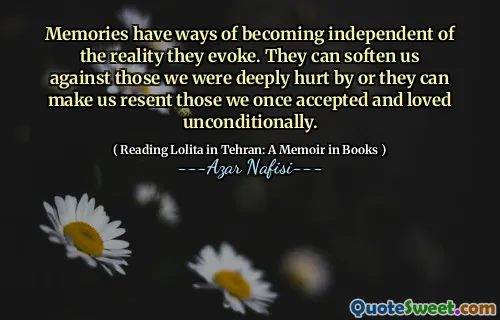
At that time, she had worn the scarf as a testament to her faith. Her decision was a voluntary act. When the revolution forced the scarf on others, her action became meaningless.
📖 Azar Nafisi
The passage reflects on the transformation of a woman's choice to wear a scarf as a symbol of her faith. Initially, this act was a personal and voluntary expression of her beliefs, representing her commitment to her values and identity. It was a choice made from conviction and freedom.
However, with the onset of revolution, the scarf, once a meaningful choice, became obligatory for many, stripping away its personal significance. This shift highlights how political changes can turn personal expressions into symbols of oppression, rendering the original intention behind such acts meaningless.











